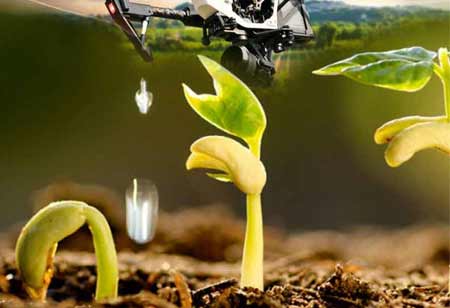Thank you for Subscribing to Agri Business Review Weekly Brief
The Impact of Digital Farming Innovations in Aquaculture
A digitalized reality in which data is brought into the production cycle regularly provides a chance to take the lead in increasing efficiency and productivity.

By
Agri Business Review | Tuesday, June 14, 2022
Stay ahead of the industry with exclusive feature stories on the top companies, expert insights and the latest news delivered straight to your inbox. Subscribe today.
New systems can detect early disease indicators, resulting in fewer deaths and antibiotic use, environmental protection, and overall farm management improvement.
FREMONT, CA: A digitalized reality in which data is brought into the production cycle regularly provides a chance to take the lead in increasing efficiency and productivity. The worldwide aquaculture business has the issue of feeding the world's constantly rising population. Like other food production industries, Aquaculture is looking for solutions to maintain food security by producing efficiently and responsibly. Drones, satellite photos, and sensor technologies have enabled new concepts such as precision farming, smart farming, and digital farming to arise. Even though they are frequently used interchangeably, these phrases have distinct meanings.
Digital feeding patterns
CageEye, a decision-making tool, uses powerful hydroacoustic technologies and advanced machine learning algorithms to analyze fish movement and environmental data. It is accomplished by detecting fish density, speed, and acceleration during feeding and visualizing it using real-time echogram images. Farmers may feed fish nutritional needs by understanding their appetites. It leads to more efficient feeding, increased fish development, and, ultimately, more sustainable production, directly addressing the demand for more seafood.
Artificial Intelligence
Observed technology detects behavioral changes in fish during feeding using an artificial intelligence (AI) technique. The system learns by observing fish motions and measuring speed, acceleration, and dispersion in the cage, tank, or pond. It determines when to cease feeding or modify the feeding rate based on the fish's hunger, providing optimal growth and feed consumption.
Vision via computers
The advancement of computer vision and deep learning technology promises to assist farmers in improving monitoring, adopting more effective growth practices, increasing yields, and, eventually, profit. Overall, shifting from mass to individual monitoring of fish performance will result in various benefits, including improved management, increased growth rate, fish consumption, reduced mortalities, environmental protection, and increased farmer profitability.
Intelligent sensing
Data collected by sensing technologies and underwater cameras is transferred to an online software application, which the farm operator can access from their control room, PC, tablet, or smartphone. It provides operators with a comprehensive perspective of the nutrition, health, and environment of the species on the farm, allowing them to be proactive and take action before a crisis occurs.
Data collectors for underwater drones
Underwater drones aid in the monitoring of off-surface farms and the tracking of environmental indicators such as pH, salinity, oxygen levels, turbidity, and contaminants. Through the drones, farm operators may check for mortalities in the cage, monitor feeding, and scan underwater cells for damage or net holes. Drones with specialized capabilities can even repair nets.





